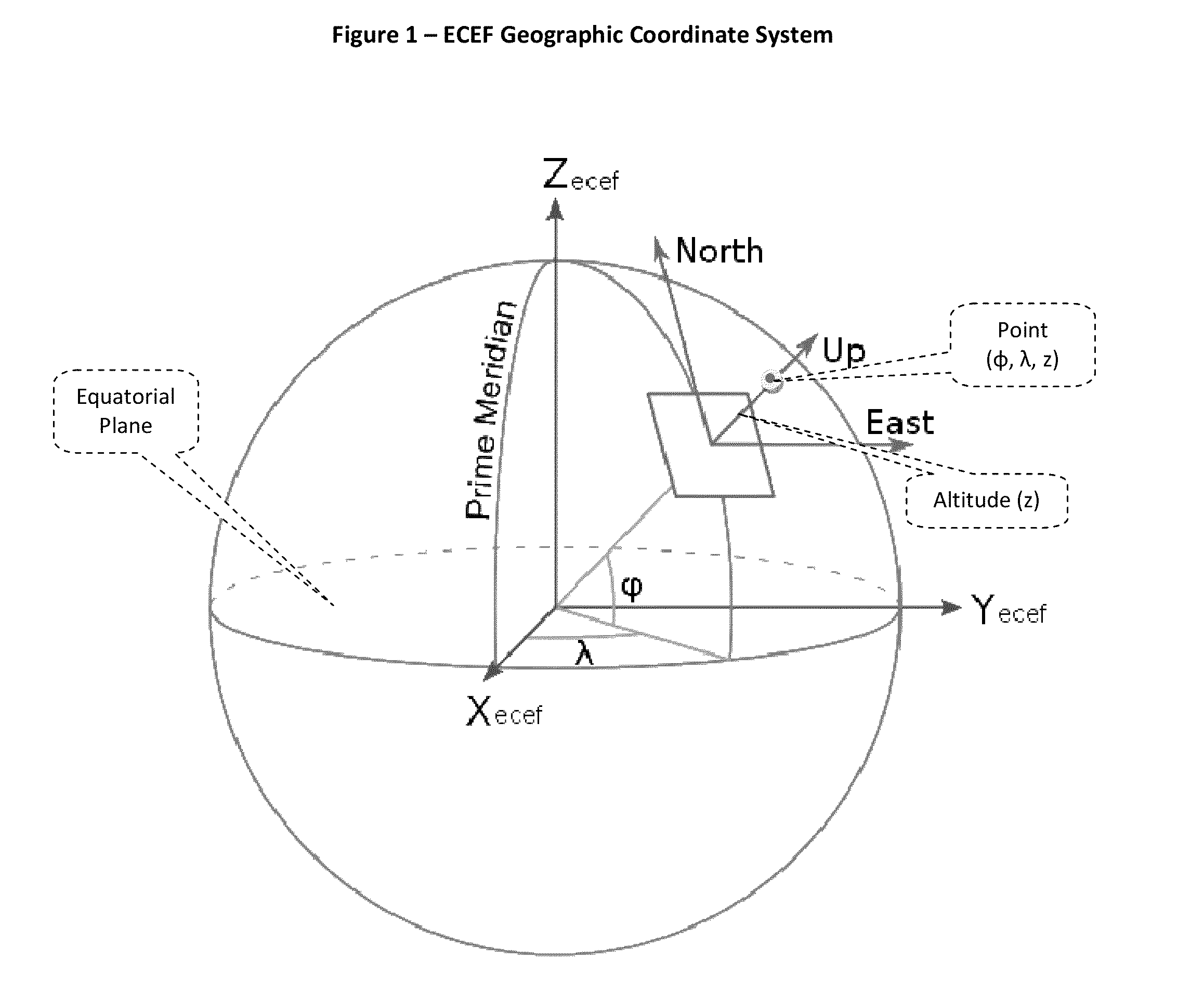Differential altitude measurment
a differential altitude and measurement technology, applied in the field of digital communication, can solve the problems of poor signal penetration through walls and floors, indoor positioning is very problematic, and the pseudolite navigation indoors suffers from multipaths
- Summary
- Abstract
- Description
- Claims
- Application Information
AI Technical Summary
Benefits of technology
Problems solved by technology
Method used
Image
Examples
Embodiment Construction
[0072]The invention is directed to a method for determining the altitude (z) of a point with known latitude (x) and known longitude (y) in a predefined geographical coordinate system, comprising the steps of:[0073]a) defining a measurable parameter associated with the altitude;[0074]b) measuring said parameter at point (x, y, z);[0075]c) defining a reference altitude (z0);[0076]d) determining at a remote location said parameter associated with the position (x, y, z0);[0077]e) communicating said parameter associated with the position (x, y, z0) to point (x, y, z);[0078]f) determining the altitude (z) at point (x, y, z).
[0079]Preferably, said predefined geographical coordinate system is an ECEF (Earth Centered Earth Fixed) Cartesian three dimensional coordinate system, based on the WGS84 geodetic model, as employed by the GPS.
[0080]FIG. 1 illustrates a coordinate system known in the art as ECEF (Earth Centered Earth Fixed). The X axis and Y axis are shown on the equatorial plane and t...
PUM
 Login to View More
Login to View More Abstract
Description
Claims
Application Information
 Login to View More
Login to View More - R&D
- Intellectual Property
- Life Sciences
- Materials
- Tech Scout
- Unparalleled Data Quality
- Higher Quality Content
- 60% Fewer Hallucinations
Browse by: Latest US Patents, China's latest patents, Technical Efficacy Thesaurus, Application Domain, Technology Topic, Popular Technical Reports.
© 2025 PatSnap. All rights reserved.Legal|Privacy policy|Modern Slavery Act Transparency Statement|Sitemap|About US| Contact US: help@patsnap.com



